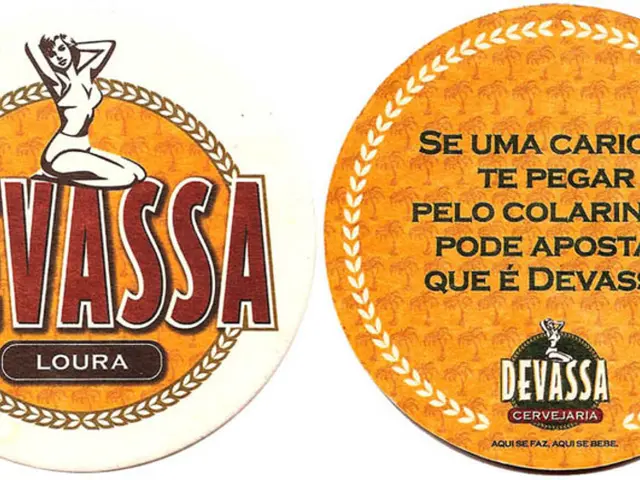Instructions for Picking the Right Upholstery Material
Readyto conquer the realm of upholstery, my friend? Whether you've been dabbling for years or just starting out, it's essential to know your fabrics. When venturing into the world of upholstery, you'll want a material that can take a beating and still look fabulous. Here's a lowdown on everything you need to know about upholstery fabrics, from Martindale ratings to the top choices for your upholstery projects.
Fun Fact: Did you know people have been upholstering furniture since the Middle Ages? If that doesn't impress your friends, nothing will!
Now let's dive in. First, let's understand the difference between upholstery fabric and soft furnishing fabric. Upholstery fabric needs to be hard-wearing enough to withstand daily or occasional use, it shouldn't stretch and create unwanted creases, and it should ideally maintain its color when exposed to sunlight. Upholstery fabric is often treated with a special finish to make it fire retardant, an important safety aspect, especially if intended for furniture in commercial use. The main difference between upholstery fabric and soft furnishing fabric used for cushions and curtains is the level of durability, determined by the Martindale test.
You may have seen a Martindale test number on some of our fabrics, but then wondered what it means? In essence, the Martindale test is a measure of how robust the end product will be. It's rated in terms of how much use the fabric will get, and there are six different scales of use:
- Decorative (Less than 10,000 Rubs) – This rating is suitable for items not subject to regular wear, such as decorative cushions or curtains.
- Light Domestic (10,000 to 15,000 Rubs) – This rating is appropriate for occasional furniture like the chair in the corner of your bedroom, to store clothes on—we all have one!
- General Domestic (15,000 to 25,000 Rubs) – This rating can be used for domestic furniture that gets used every day, like bench seat cushions or a domestic sofa.
- Heavy Duty (25,000 to 30,000 Rubs) – This rating is for more than the average number of sits on sofas, chairs, and cushions, especially in homes with kids, pets, and grown-ups!
- General Commercial Use (30,000 to 40,000 Rubs) – This rating is reasonably heavy-duty and is suitable for the Hospitality Industry.
- Commercial Grade (40,000 Rubs and above) – This is used for the very highest number of bottoms on seats.
While the Martindale test considers how robust the end product will be, it doesn't include protection from UV light, chemicals, dirt, or pets. It's essential to take these factors into account, as even a velvet with a high Martindale rating will quickly develop a dented pile from pet claws.
Now, you're probably wondering, does all fabric used in upholstery need to be fire-retardant? In domestic use, it's essential to consider fire retardancy when recovering furniture. However, if you're getting someone to do it professionally, they will want the fabric to be fire-retardant. Even if the piece of furniture is older, it needs to be thought about at least, as anything made from 1950 onwards must match up to the Furniture and Furnishings Fire Safety Regulations. There are a few different options for this: the fabric can be treated before use, or you can use a fire-retardant lining. The treatments are either soaked or the back is chemically treated.
But don't worry, curtains, blinds, bedding, and cushions don't have to be fire retardant, and nor do the pop-out seat pads in most kitchen or dining room chairs.
So, what's the best fabric for upholstery? Now we've told you all about the important things to bear in mind, let's talk about the fun part of upholstery—choosing a fabric! For large pieces of furniture, it might be an idea to go for a neutral or pattern-less fabric because things like rugs, cushions, and lampshades come and go, but the sofa stays a while. It would be a costly mistake if you have to re-cover it because you decide you don't like the fabric.
That's what we thought when we were choosing our latest range of Upholstery Fabrics. Although there are many different subtle plain as well as bright colors in the collection, even with the plains, the high texture means they aren't a flat addition to any room, but they are extremely hard-wearing and fire retardant, making them perfect for your next upholstery project.
Now, if you do have a sudden urge to go mad for a bright print, we would recommend doing it on a smaller chair or maybe a stool. A bit like the idea of saving the most detailed wallpaper for the downstairs loo (always a talking point), a small independent chair is a great place for a really interesting print...
Here are some of the top choices for upholstery fabrics:
Polypropylene Fabric
Polypropylene is a staple in the upholstery world because it is exceptionally hard-wearing and easy to clean without the need for stain protectors or chemical treatments. It is also resistant to light fading and can easily be made fire-retardant. Polypropylene is a synthetic fabric which is safe for human contact while also being breathable and, even better, recyclable.
Polyester and Cotton Blends
Polyester is rarely used alone in upholstery fabrics but blended with cotton it can create a high-performing, attractive material with a slight sheen for upholstery with a high Martindale rub test.
Cotton
Cotton can be a great upholstery fabric, depending on the weave and finish. Cotton is less prone to pilling or creasing, unlike linen. Look out for high-quality cotton upholstery fabrics like those we stock from Maison Thevenon.
Cotton Panama
Panama weave cotton is an excellent choice for upholstery as it is fairly durable and is a lovely soft furnishing fabric that can be used to upholster occasional use chairs and sofas.
Velvet
Most upholstery velvet fabrics are actually made from polyester but have the lovely soft pile you get with velvet. Only recommended for occasional use upholstery.
Lastly, speaking of upholstery care, a top tip would be to give your sofa and armchairs a quick vacuum once a month, to remove all those scratchy pieces of dirt which might rub against the fabric.
And there you have it! Ready to choose your upholstery fabric? Don't forget, you can use our Request a Swatch service to see how different fabrics look and feel. We're here to help, so if you have any questions, don't hesitate to give us a call. Now, get out there and save many chairs!
- When selecting a lifestyle-oriented fabric for your upholstery project, consider the Martindale test ratings to ensure the chosen material can withstand the required level of daily or occasional use, as recommended for fashion-and-beauty items like sofas and chairs.
- To complement your home-and-garden decor, opt for upholstery fabrics that are both durable and stylish, such as high-quality cotton or panama weave cotton, which can serve as an attractive, long-lasting addition to your upholstery pieces while providing the softness and elegance you desire for your living space.




